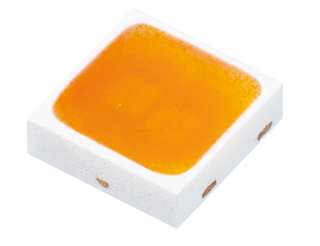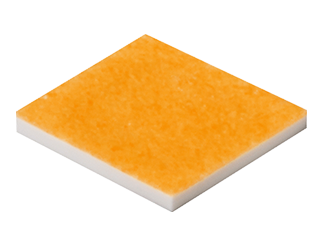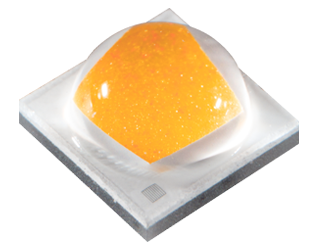HPS color LEDs

True alternative to HPS contributing to the realization of a sustainable society

Product Features
What is an HPS color LED?
An HPS color LED is an LED that genuinely reproduces the emission color of High Pressure Sodium lamps (HPS) (Figure 1), which is most often used for road lighting and outdoor lighting around the world. As a true alternative technology to mercury-containing HPS, it will contribute to the realization of a mercury-free society and carbon neutrality.
In street and outdoor lighting, the use of LEDs has been increasing over the past decade or so due to their high efficiency and long life; however, in residential areas and the center of town, there are cases where the switch to LEDs is not being made because there is a concern that the bluish white light of LEDs may change the familiar landscape and atmosphere. (Figure 1)
In some extreme cases, street lights that were once converted to LED have been changed back to HPS due to demands from residents. In addition, attention has been drawn to so-called "light pollution", such as sleep disturbance due to excessive glare, inability to see the stars because of the dim night skies, and adverse effects not only on humans but also on the ecosystem including insects.
Nichia's HPS color LEDs can significantly change this situation. While they have the same emission color delivered by HPS, HPS color LEDs would not change the landscape and atmosphere. In addition, it reduces the light pollution caused by the higher CCT LEDs. Thus, it can be expected to accelerate the smooth shift to LEDs in cases where the switch to LEDs have not progressed due to the emission color. (Figure 2)
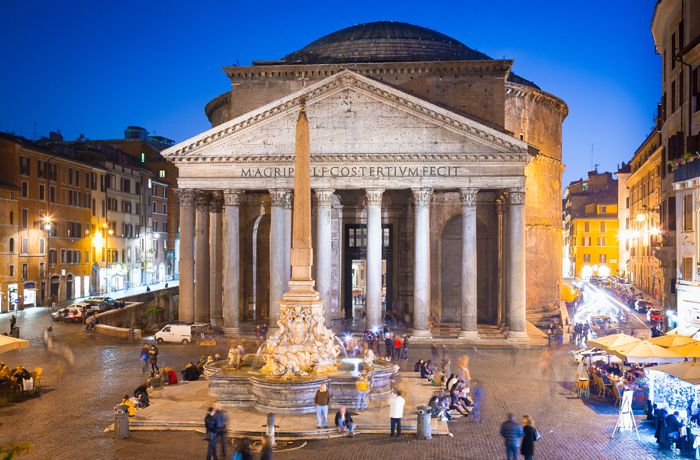
Figure 1. Example showing the contrast between HPS and high CCT LEDs
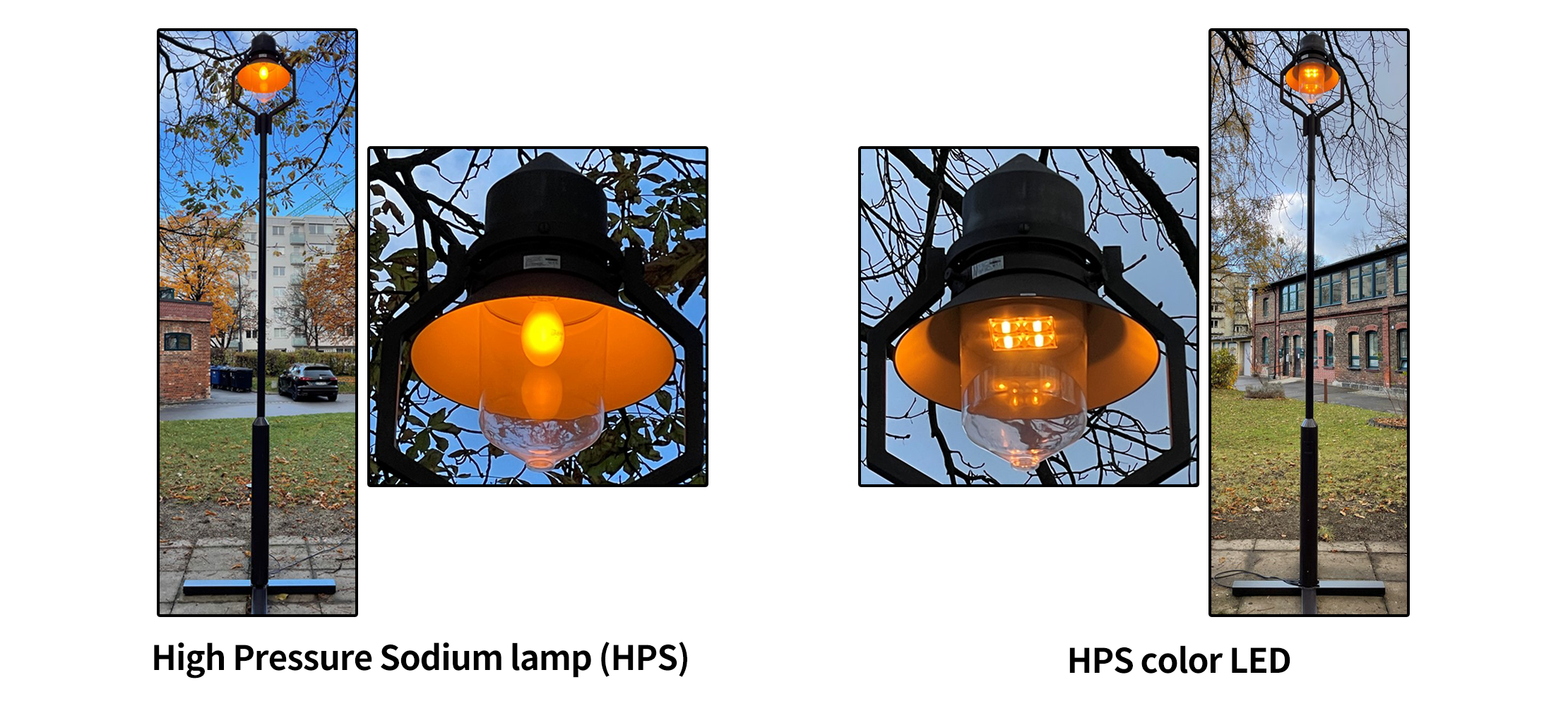
Figure 2. Color comparison between a High Pressure Sodium lamp (HPS) and HPS color LED
The replacement of HPS with HPS color LEDs brings a number of benefits to the community, including eliminating mercury. These benefits are described below.
Benefits of switching from HPS to HPS color LEDs
Mercury-free
LEDs do not contain mercury. The regulation towards mercury is getting stricter year by year.
Today most fluorescent lamps are regulated. However, despite containing mercury, there are still exemptions in the RoHS Directive. In the field of general illumination, HPS used for street lighting luminaires and horticulture remains the highest runner of mercury-containing lamps.
The reason for the exemption is that it is considered that there is no alternative technology available. However, Nichia expects that HPS color LEDs can be recognized as an alternative technology and will be a driving force to accelerate the movement towards mercury-free.
Visit the Blog
Allows instantaneous on/off cycling and adjustment of the light level enabling the capability of "smart lighting" (Video)
As the video shows, there is a big difference in the time it takes to turn on the LEDs and the HPS; the LEDs can be turned on and off immediately, but the HPS takes more than 5 minutes to turn on fully and almost 30 minutes to turn off and on again. Since LEDs can be turned on and off instantly they can be linked to sensors so that they can be turned on only when people or cars pass by, or adjust the light level; this is not possible to do with HPS.
In addition to the high efficiency of the light source itself, this will enable further reduction of power consumption and is expected to contribute to the realization of carbon neutrality. For example, if street lights in areas where there are fewer pedestrians at night are converted to smart lighting and turned on for only 10 minutes when people and cars pass by, the power consumption will be reduced to 1/6, assuming that one person passes by per hour.
The right light at the right place at the right time.
Video: Time comparison to light up a High Pressure Sodium lamp (HPS) vs. an HPS color LED
High Efficacy
HPS color LEDs contribute to the reduction of power consumption with a luminous efficacy that exceeds that of HPS, which is generally considered to be highly efficient. Together with the further reductions achieved by immediate lighting and tuning of the brightness mentioned above, it is expected to make a significant contribution to the realization of carbon neutrality.
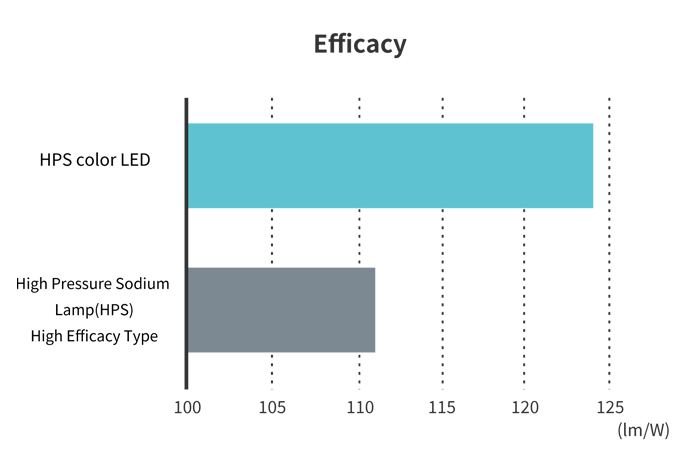
Long lifetime
Lighting fixtures installed using HPS color LEDs can have a life expectancy of 2.5 times longer than that of HPS, reducing the frequency of replacement work done at hazardous heights.
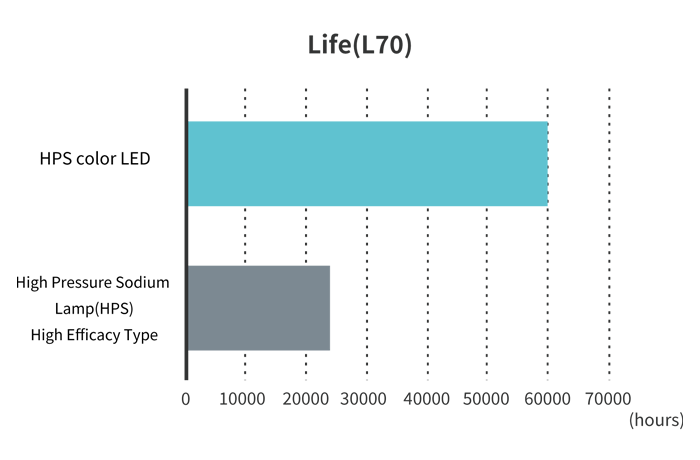
Realization of comfortable and safe lighting space with high CRI
HPS color LEDs have the same emission color as HPS with a high CRI of Ra≥70, making it easier to distinguish colors while maintaining the nostalgic atmosphere of a city illuminated by HPS. This can create a colorful and vibrant lighting space, as well as a safe and secure lighting space compared to HPS which has a lower level of color visibility.
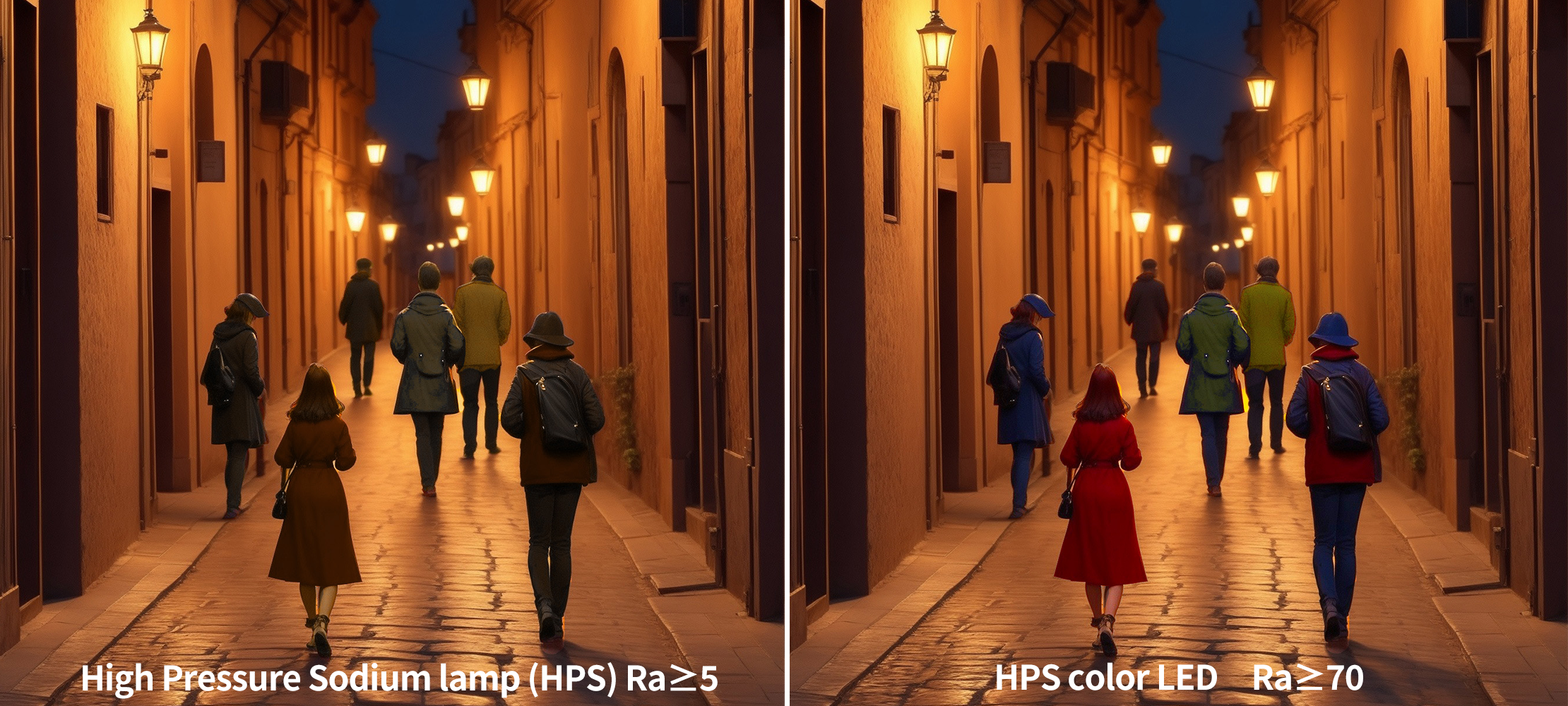
Figure 3. CRI Comparison Example
Reduction of light pollution while still having the same emission color as HPS
HPS color LEDs which reproduce the emission color of HPS can reduce light pollution, a problem commonly associated with LEDs that have a high color temperature and emit a whitish light.
Light pollution refers to the effects of improper design and installation of artificial lighting, as well as its use and operation without consideration of the growth of plants and animals and various human activities, especially noted with high color temperature and whitish light sources. For example, animals and insects are attracted to light or have a tendency to dislike light and run away from it. There are critical issues such as migratory birds crashing into buildings that are too bright, and sea turtles that do not like sandy beaches with white light during spawning season, which reduces their reproductive capacity.
There are several impacts on humans. Excessive brightness from street lights in residential areas can lead to sleep disorders. Additionally, the diffusion of illuminated lights during nighttime may destroy the visibility of the starry sky. In the case of plants, excessive lighting can disrupt their ability to recognize nighttime, resulting in stopped growth, and can also attract pests, thereby affecting crops.
Comparison of characteristics between a High Pressure Sodium lamp (HPS) and an HPS color LED
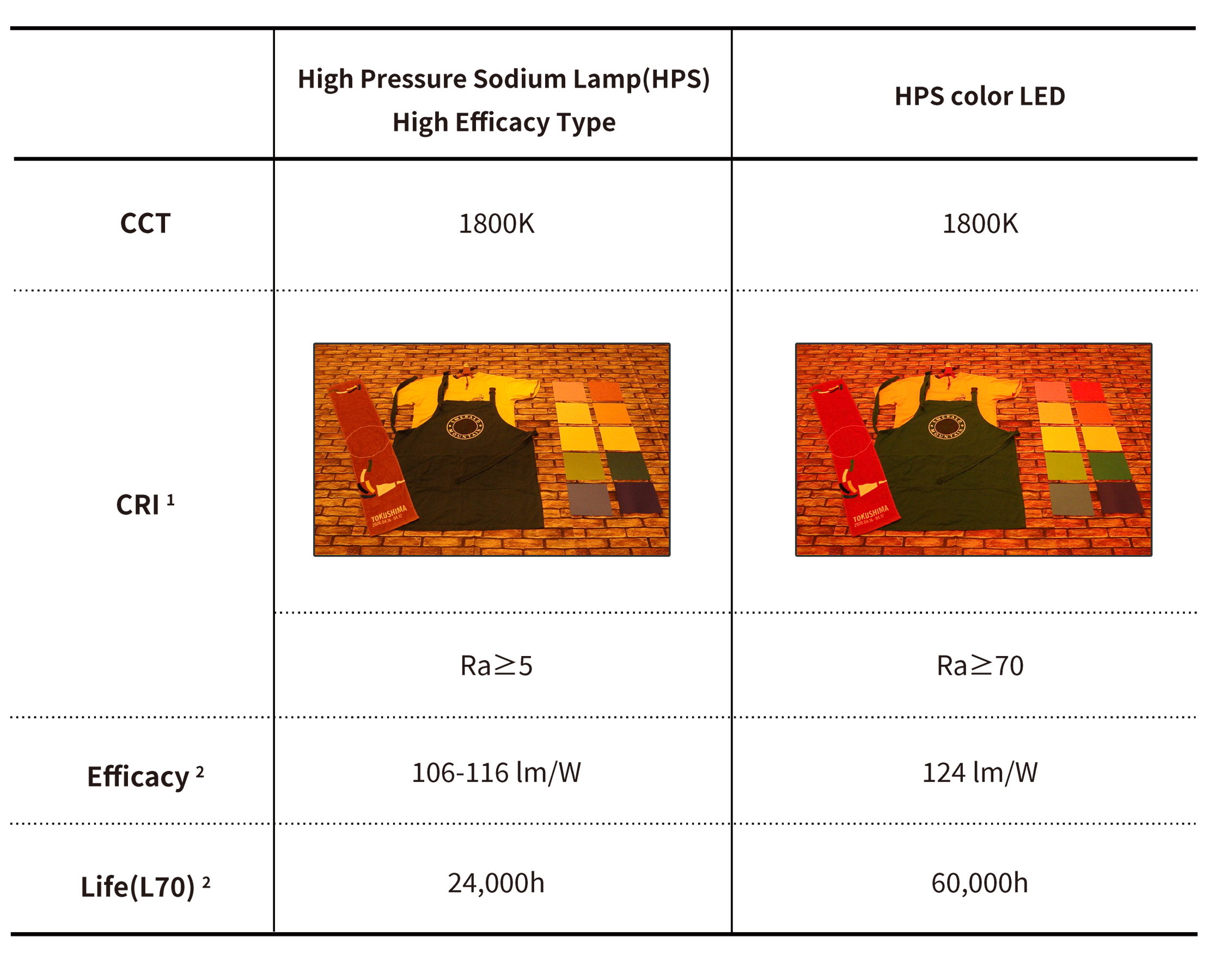
1 The Ra value is based on Nichia's measurement conditions.
2 The efficacy and life for the HPS is based on the catalog value.
The efficacy and life for the HPS color LED is based on the Nichia's NVSW219F-V2 LED.
Products
Situation to Use
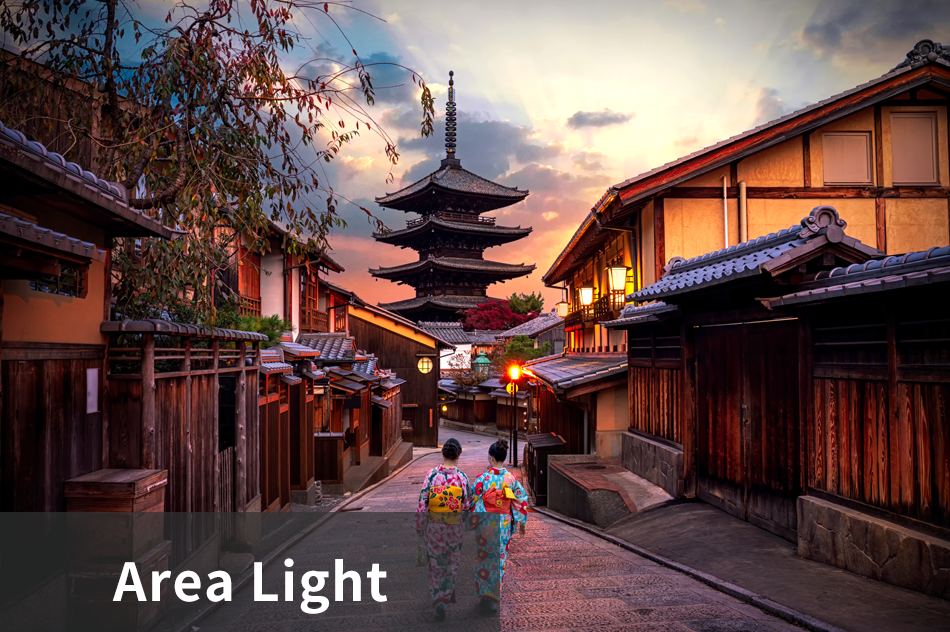


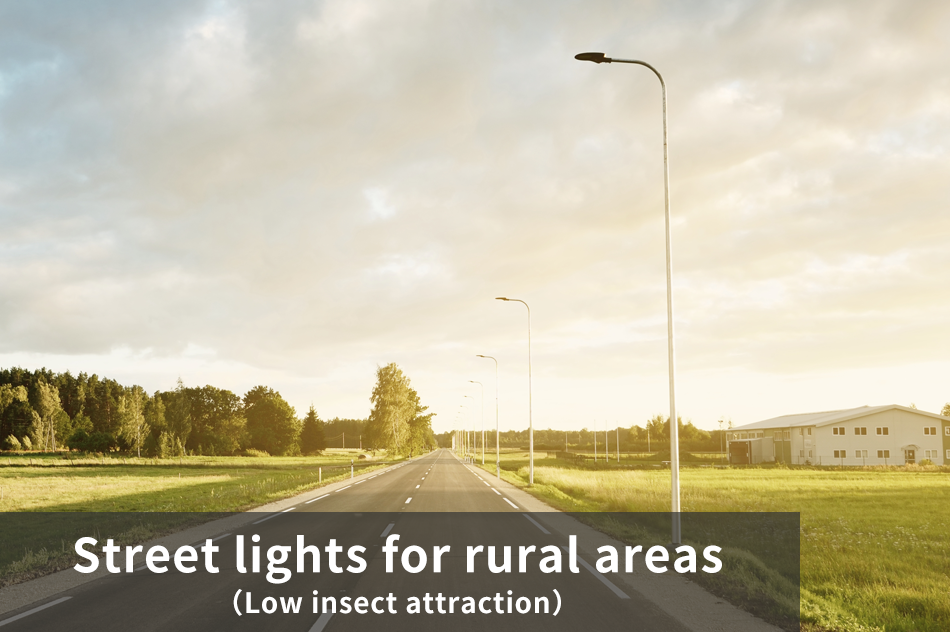


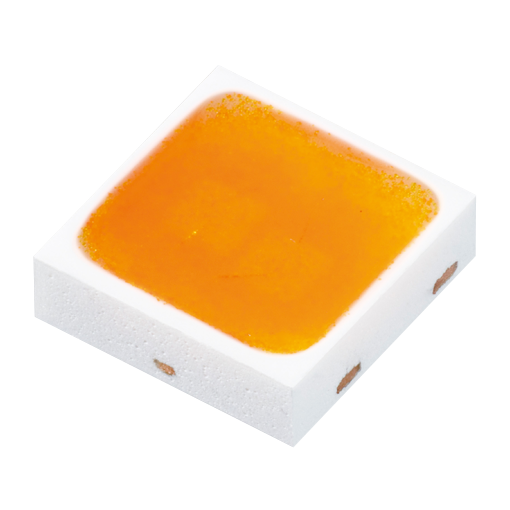
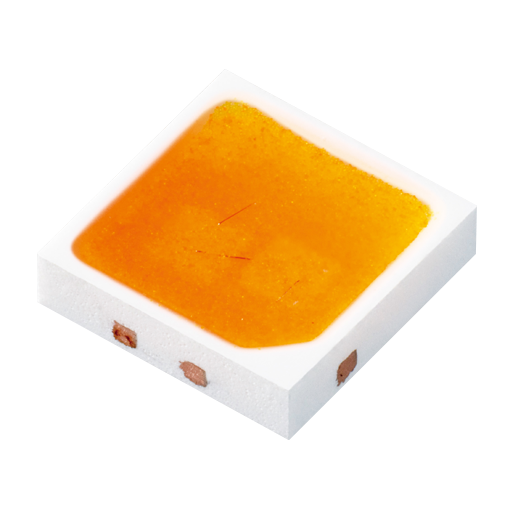
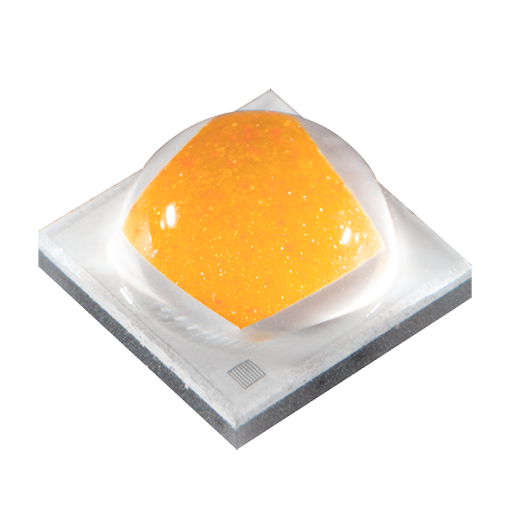
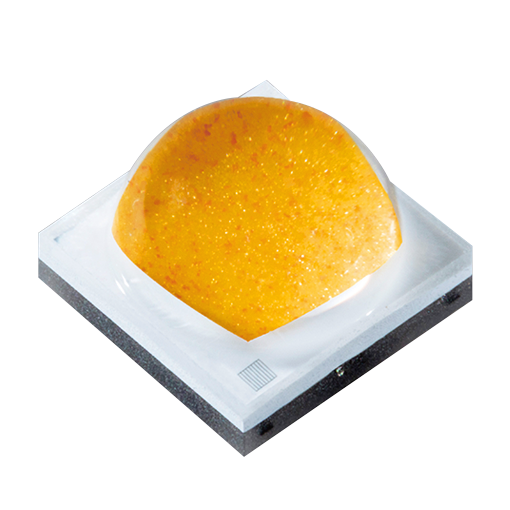
.png)
